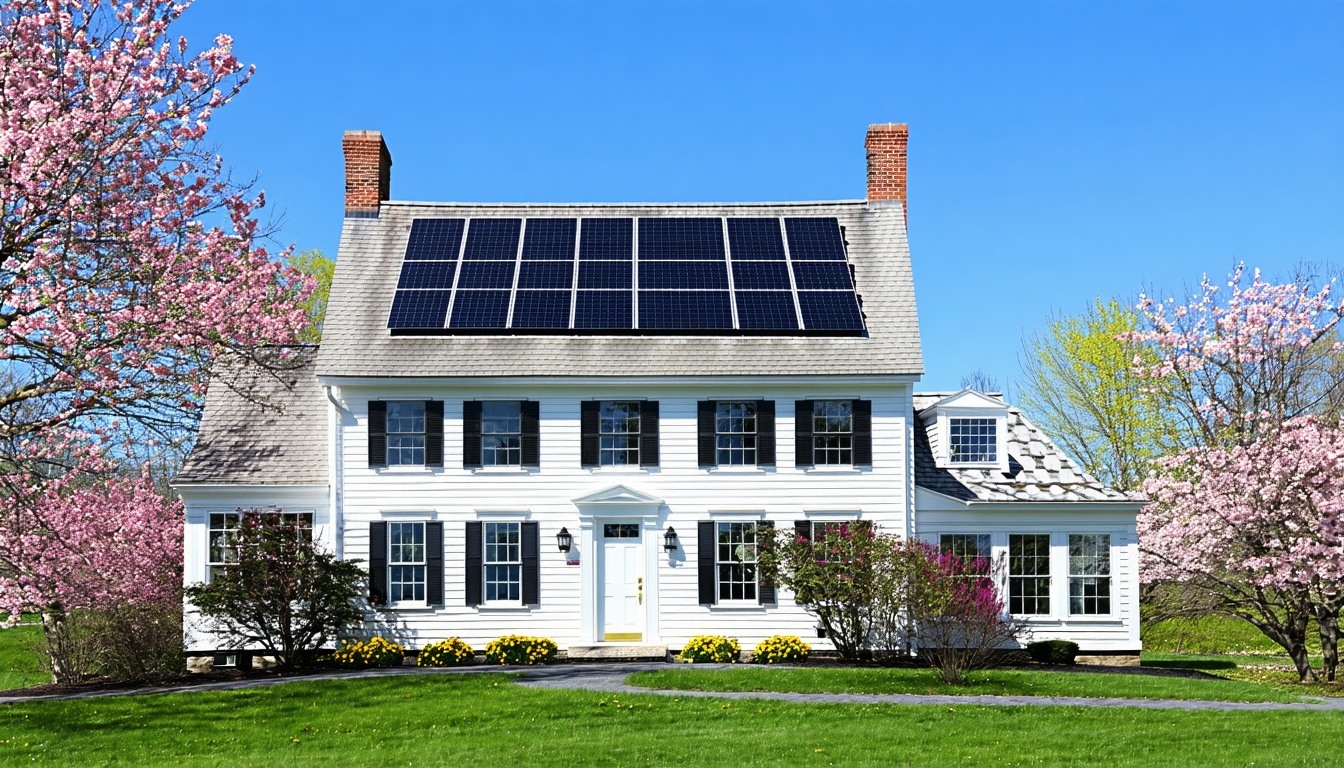Changes to Mass Save in 2025

As a Realtor and resident of West Newbury, I care deeply about improving home energy efficiency and our local and global environment. With the new 2025-2027 Massachusetts Energy Efficiency and Decarbonization Plan, Massachusetts is making significant strides toward a greener future, and these changes offer great opportunities for homeowners looking to make their properties more sustainable. I'm stoked to see these ambitious goals and am eager to help my clients and community meet them.
Key Takeaways:
- $1.9 billion in equity investments targeting underserved communities, including low- and moderate-income households and renters.
- A goal of installing heat pumps in 119,000 homes, with a focus on low-income homes.
- Increased emphasis on weatherizing homes, especially in underrepresented areas.
- Expanded customer incentives, with over $3.4 billion allocated for programs supporting energy efficiency upgrades.
- A significant boost in decarbonization efforts, including support for electric vehicle (EV) adoption and clean energy generation.
- An emphasis on workforce diversity, equity, and training to meet growing needs in the energy sector.
In Massachusetts, the pursuit of energy efficiency and environmental sustainability has long been a cornerstone of public policy, and the recently unveiled 2025-2027 Energy Efficiency and Decarbonization Plan builds on that tradition. As a realtor and homeowner in West Newbury, I’ve seen firsthand how climate change and rising energy costs are becoming growing concerns for homeowners. Fortunately, the state’s latest plan is not only addressing these issues head-on, but also empowering residents with the tools and resources they need to make their homes more energy-efficient, lower their carbon footprints, and ultimately reduce their utility bills.
What’s New in the 2025-2027 Plan?
The 2025-2027 Energy Efficiency and Decarbonization Plan is a major step forward compared to the previous cycle, with a focus on expanding the reach of energy efficiency programs and increasing investments in underrepresented communities. One of the most exciting aspects of this new plan is the commitment to a $1.9 billion equity-related investment, with the goal of addressing the needs of low- and moderate-income households, including renters. As someone who lives in West Newbury and works with clients from diverse economic backgrounds, I’m particularly excited to see a more inclusive approach to energy efficiency.
This investment will support critical programs aimed at weatherizing homes, installing heat pumps, and providing other energy-saving upgrades. For homeowners like myself, who have already embraced the energy-efficient practices outlined in books like Pretty Good House by Michael Maines et. al., it’s encouraging to see that Massachusetts is pushing for even broader adoption of these principles. By focusing on electrification and decarbonization, the state is setting ambitious goals for reducing greenhouse gas emissions while providing tangible financial support for homeowners looking to make energy-efficient upgrades.
 Learn more about this awesome book!
Learn more about this awesome book!
Heat Pumps: The Key to Massachusetts' Future
One of the standout features of the 2025-2027 plan is the commitment to install heat pumps in 119,000 homes across the state. This is a huge leap from previous efforts, and it is particularly notable because heat pumps are one of the most efficient ways to heat and cool homes. Not only do heat pumps drastically reduce reliance on fossil fuels, but they also offer significant savings on energy bills. The plan prioritizes low- and moderate-income households, aiming to install heat pumps in more than 23,000 of these homes.
As a homeowner who has long been interested in reducing my home’s energy consumption, I can tell you that heat pumps are a game-changer. In addition to being incredibly energy-efficient, heat pumps also support the transition to an all-electric home, which aligns perfectly with Massachusetts' decarbonization goals. The state’s push to make heat pumps more accessible and affordable will help make this powerful technology a reality for many more residents, further advancing Massachusetts’ climate goals and benefiting homeowners who want to lower their energy bills.
Weatherization: A Pillar of Efficiency
Weatherizing homes has always been a cornerstone of energy efficiency, and the 2025-2027 plan takes it to new heights by committing to weatherize more than 184,000 homes, with a focus on renters and underserved communities. This is especially crucial in a state like Massachusetts, where cold winters can lead to significant energy consumption for heating. For homeowners in West Newbury, where older homes are more common, weatherization efforts can make a dramatic difference in comfort levels and energy efficiency.
Through this plan, Massachusetts is addressing the barriers many homeowners face when it comes to making their homes more energy-efficient. Weatherization, which includes things like sealing drafts, insulating attics and basements, and upgrading windows and doors, can drastically reduce energy waste. The plan includes funding for rebates and incentives that make these improvements more accessible to a wider range of residents, which means more homeowners will be able to make lasting improvements without breaking the bank.
Decarbonization Efforts and the Role of Clean Energy
The 2025-2027 plan also emphasizes decarbonization efforts that go beyond energy efficiency. In addition to heat pumps and weatherization, the state is focused on expanding clean energy generation and adoption, including a strong push for electric vehicle (EV) infrastructure. As a realtor, I’ve seen more and more clients asking about homes with EV chargers, and I believe this trend will only continue to grow.
The push for EV adoption and clean energy generation is an essential part of the decarbonization plan. Massachusetts is investing in a cleaner grid and expanding incentives for homeowners who choose to install solar panels, battery storage, and EV charging stations. This is an exciting development because it will enable homeowners to reduce their reliance on fossil fuels even further, while also taking advantage of state and federal incentives to lower installation costs.
For homeowners like myself who are passionate about sustainability, the new plan offers the tools and support needed to take action on a larger scale. Installing solar panels or an EV charger not only reduces carbon emissions but can also provide financial benefits in the form of energy savings or increased home value. As we continue to see the effects of climate change, these kinds of investments are becoming essential for anyone who wants to make a real difference.
Workforce Development and Equity
Another important aspect of the 2025-2027 plan is the focus on workforce development, diversity, and training. Massachusetts is committed to expanding opportunities for underserved communities by creating jobs in the energy efficiency and clean energy sectors. This includes developing training programs for a diverse workforce to meet the growing needs of the industry.
As someone who values progress and innovation, I am excited to see the state invest in training programs that will help people build careers in the green economy. This is a critical component of the plan because it ensures that the transition to a more sustainable future will be inclusive and equitable. Furthermore, as the demand for energy-efficient solutions grows, we will need a skilled workforce to meet the demand. This initiative will provide economic opportunities for many while helping the state achieve its energy goals.
The 2025-2027 Massachusetts Energy Efficiency and Decarbonization Plan is an exciting step forward for homeowners, realtors, and anyone who cares about building a more sustainable future. With a focus on equity, decarbonization, and energy efficiency, Massachusetts is leading the way in creating a cleaner, more affordable energy future for all its residents.
If you're a homeowner in West Newbury—or anywhere in Massachusetts—this plan offers a fantastic opportunity to make your home more energy-efficient and environmentally friendly. With the right investments, we can all be part of the solution to climate change while saving money and creating a more sustainable world for future generations.


 Read the full plan here
Read the full plan here